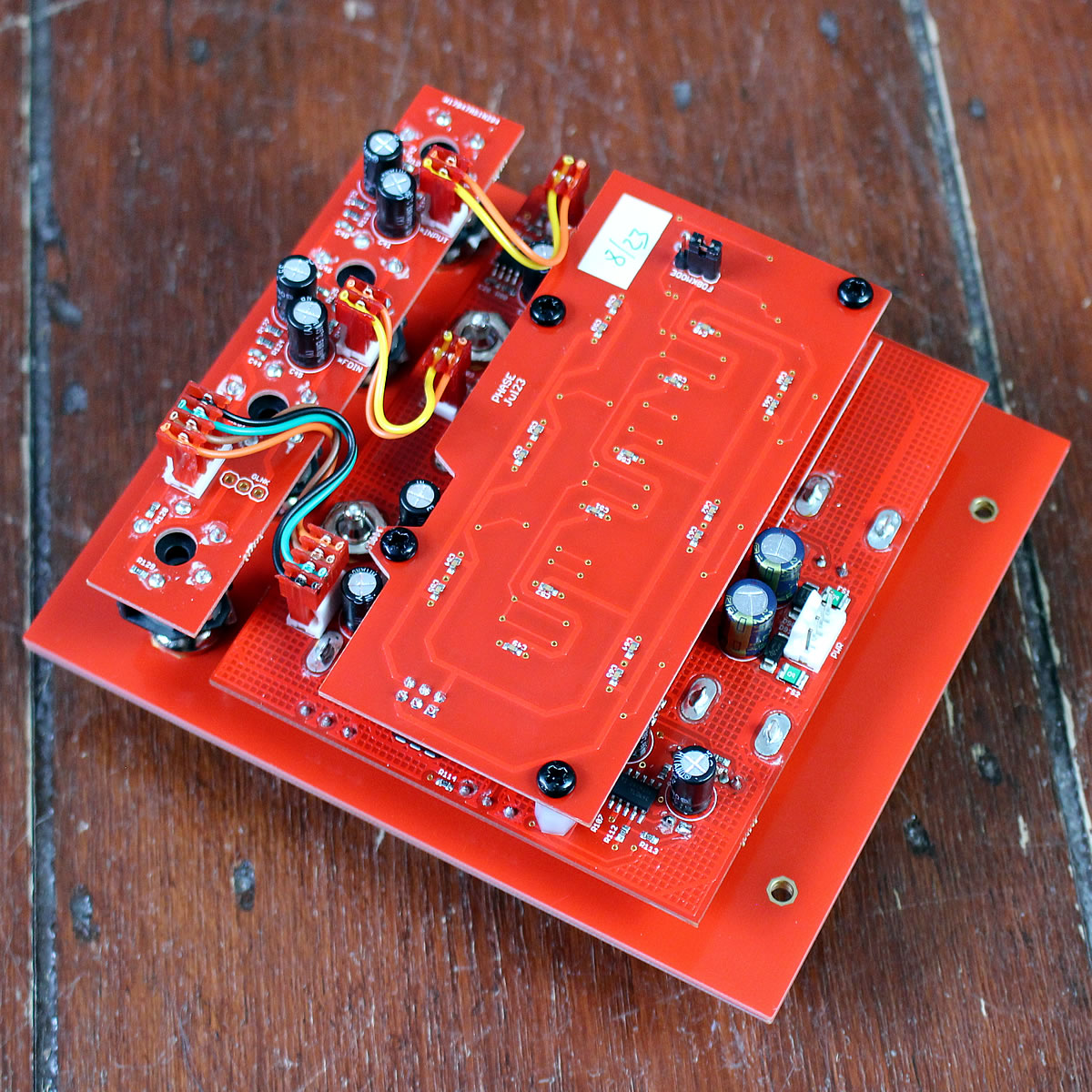Description
The Phase is a 6 pole, analogue Phase Shifter designed for hands-on sonic thickening. Made up of 12 All-Pass Filter stages, it features fully balanced Input/Outputs, Feedback, and Modulation from an internal LFO and/or external sources. All in a very playable design, stemming very much from the blue Phaser module.
Check the Block Diagram image. The main Input is designed for typical line level signals with variable gain up to 20dB and soft-clipping so you can add some overdrive if desired. The Feedback input stage is similar but without the variable gain – it is normalised from the Phase output & plugging a jack plug in breaks this normalisation. The buffered input signal is split off to the Phasing stages and the dry signal also passes on to the output mixer where it mixes with the Phase stage outputs. The Phase stages is also buffered to provide a pure wet output.
The magic of All-Pass Filter stages, here built around three of the ever versatile 2164 quad-VCA chips, is that they alter the phase of signals at their filtering frequency while preserving their amplitude. (With a pure sine-wave, this would look like the waveform being shifted in phase from the input – but you’ll rarely be putting in a pure sine!). When you mix together the dry & processed paths, frequencies cancel each other out to create peaks & troughs in the frequency response. The main Phase control, combined with any modulation, sets the centre frequency for the filtering and covers the whole audio spectrum.
Dialing in Feedback passes the phase-stage output back around to its input (via a normalised jack connection – allowing experimentation with further external processing) which emphasises the filtering up to the edge of resonance. The Add/Subtract switch inverts the phase output & the feedback input to give two different response modes and there is also an internal jumper that allows some subtle behavioural differences by putting the feedback into either the first or second filter stage (set as standard to 2nd stage, down position, but… experiment!).
Static filtering (ie. without modulation) can be used to highlight particular frequencies, but bringing in modulation is perhaps the more readily audible approach – give it some movement! The internal sine-wave Low Frequency Oscillator (LFO) covers traditional sweep modulation (range approx 0.08-10Hz), but more interesting usage can be found with external sources such as sequencers etc. Note that when switched on initially, if the LFO Rate is set low then the oscillations will take some time to build up to full strength, so you may want to turn the control up full until the LED indicator is clearly blinking. The LFO also has a banana output jack (+/-5V). The External Modulation input takes a CV input (typically 10V peak-to-peak) and has a convenient polarity/mute switch. See the Understanding signals & voltages and Interfacing with Bananas pages for further technical details.
Technical Specifications:
Inputs – Mono balanced 1/4″ TRS Jack – impedance 20k Ohms
Outputs – Mono Impedance-balanced 1/4″ TRS Jack – impedance 100 Ohms
CV – 4mm Banana – CV Input impedance 100k Ohms – LFO Output impedance 470 Ohms
The standalone Phase is housed in a custom aluminium enclosure (4.5 x 5.25 x 3.5 inch) with PCB material front and side panels. The case holds a DC/DC converter which converts the 12VDC external supply (minimum 300mA, 2.1mm centre positive) to the bipolar +/-15V internal power. A 90-250VAC worldwide power pack is included with interchangeable plug socket adaptors.
It can also be supplied as a module for integration into a larger BugModular setup.
Size: 3FW
Current: +ve 50mA, -ve 40mA
The Phase is covered by a 2 year parts warranty.
Price – £315 (+VAT in UK – £378) + shipping








